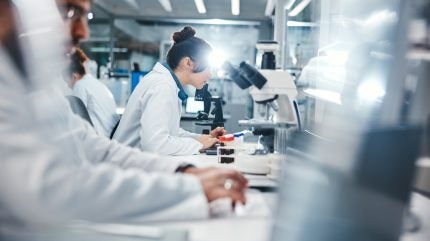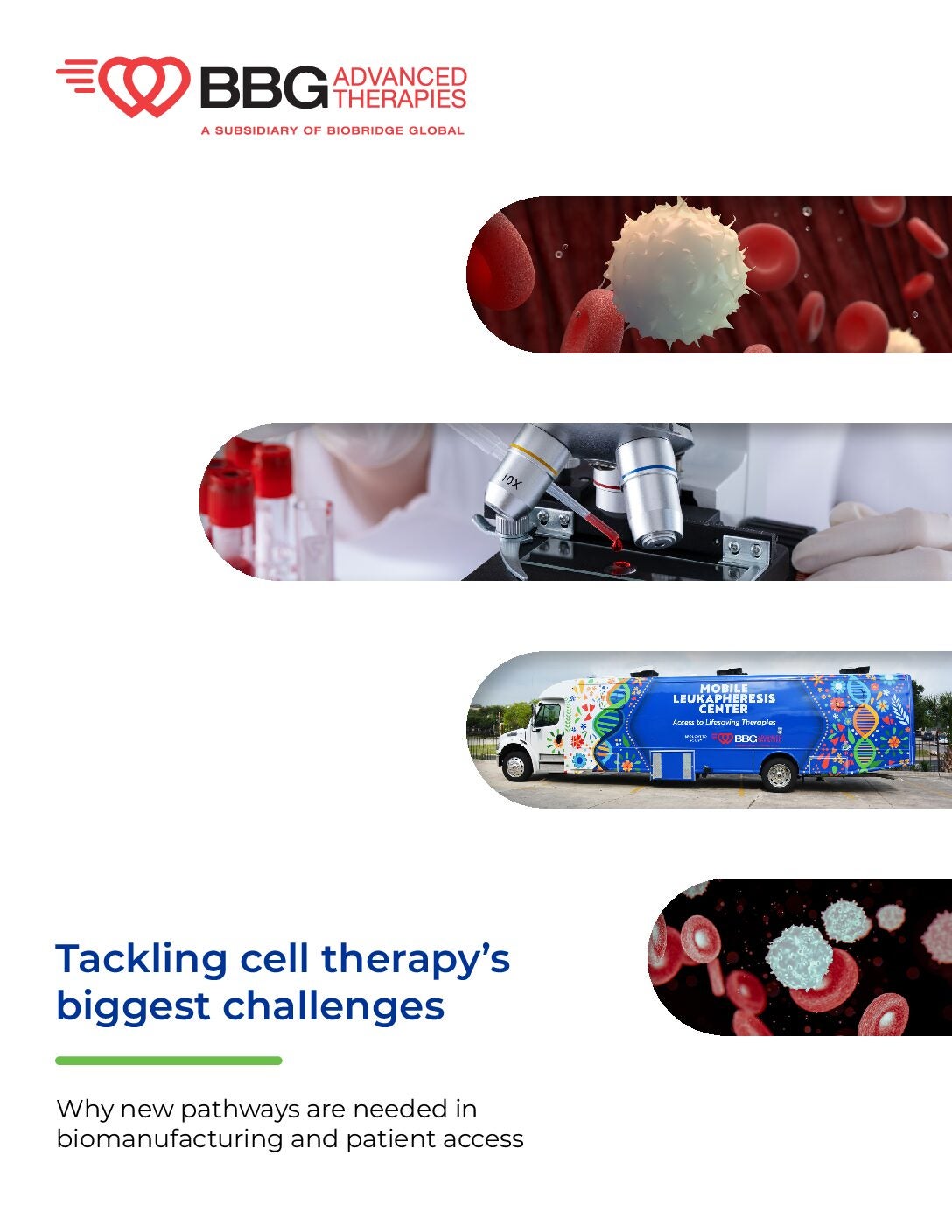
While major hurdles are still to be overcome, cell therapies have finally become a reality for certain cancers, and soon other autoimmune and degenerative diseases – and it’s been a long time coming. In South Texas, a regenerative medicine non-profit has been on a decades-long journey of its own. Following a new brand launch, BBG Advanced Therapies is now pioneering a cell therapy regional access model supported by state-of-the-art testing laboratories and manufacturing infrastructure in San Antonio, Texas, as well as a brand new mobile leukapheresis center that is set to start supporting patient collections from the surrounding areas within the coming months.
At the helm is the company’s newly appointed Chief Operating Officer Adrienne Mendoza, who recently sat down with Pharmaceutical Technology to discuss how the company’s journey and mission led to the launch of a world-first innovation for patient access.
Q: Hi Adrienne. Could you tell me a little about yourself and your background in cell therapies?

A: It all started at a blood bank, which is where I got to see first-hand some of the chronic diseases and cancers that people who receive blood on a daily basis suffer from. I wanted to be involved in preventing or more effectively treating those diseases, so early in my career, I was drawn to the adjacent field of umbilical cord blood banking, and that’s where I got a chance to be part of the beginnings of cell and gene therapy and cord blood transplants. I moved to pharmaceuticals for a while and worked for a contract development manufacturing organisation in a quality and regulatory affairs role. I learned a lot about how pharmaceutical organisations operate, how clean rooms are managed, and how you build and scale out standard operating procedures through quality risk management, but after a while I decided to come back to blood banking and cell therapies – the field I love given the potential for advanced therapies to revolutionise medicine. That’s when I discovered BioBridge Global – the parent organisation to BBG Advanced Therapies – and joined to support the advancement of the mission, which is to save and enhance lives through the healing power of human cells and tissues.
Q: How would you describe the recurring challenges of these industries, particularly with regards to developing and commercialising new advanced therapies?
A: It takes quite a bit of cross-functional work to bring different members of the pharmaceutical drug development communities together. The manufacturing and testing of these products involve methods that are not always well established; you have to be creative. It requires a lot of support to develop processes, to understand how cells function, and what potency looks like. Everyone’s running off a non-scripted blank page when they start out. It takes a lot of collaboration, teamwork, and some trial and error to develop a new process every single time.
There are also huge logistical challenges with cells being very sensitive to freeze-thaw cycles and having to be procured where the patient is and transported through multiple chains of custody and logistical manoeuvres to get to a place where they can be tested and manufactured and then ultimately delivered safely and timely back to the patient. That’s such a different dance to what traditional drug products that are manufactured in bulk and sent to pharmacies undergo. So, not only do you have entirely new processes to establish and develop test methods for, but you also have new logistical frontiers to overcome. I think that logistical burden is the key constraint in getting these therapies to patients. You can scale up the manufacturing processes, but can you scale out the delivery systems? That’s becoming the key question.
Q: Launched at the beginning of 2025, BBG Advanced Therapies is a new brand built on old foundations. Can you explain more about the history behind the company and what the new brand represents?
A: BioBridge Global started out as a large community blood bank in South Texas and evolved into a tissue recovery and regenerative medicine organisation. We’re in an area of the country where military medicine is very prominent, and we’ve developed capabilities to support much of the work being done locally, which has been in the realm of regenerative medicine for wounded soldiers. We have also developed the supporting infectious disease testing requirements demanded from different types of cells and tissues, which can carry the risk of blood-borne disease or contamination. We created a testing laboratory which has grown to be a very high-throughput, low-turnaround-time organisation. Over time, we took those testing capabilities and formed a team to help develop new test methods to characterise and authenticate the potency of different cell types. Ultimately, we then started to support manufacturing services for isolation and expansion of cells and to do that in a facility controlled to ensure any contamination is prevented, such as you’d see in pharmaceutical production facilities.
We’ve been lucky over the years to have a lot of support from our community; we’re a non-profit, but we’ve been very successful in reinvesting in our organisation over time, allowing us to create these different skillsets that support advanced therapies across three different subsidiaries – South Texas Blood & Tissue, QualTex Laboratories, and GenCure. We realized the best thing we could do was take this rich heritage we have and bring together all the incredible expertise we’ve built over the years into one organization. So within the Biobridge Global enterprise, we launched BBG Advanced Therapies—and that’s when I stepped into the role of Chief Operating Officer for the division.
Q: What brought BBG Advanced Therapies to launch its mobile leukapheresis center?
A: Because of our mission, we’re always thinking about the patients in our community who could benefit from these therapies. A key issue for this field is the capacity to collect the cells at more facilities, so that therapies can be delivered to more patients and local sites. Our geographical region is very large with 100 hospitals spread across almost 70,000 square miles, with huge distances between each one, yet only one hospital has the skillset needed to deliver CAR-T cell therapies.
We feel that the key is being able to collect the cells in the community where the patient lives, rather than burdening the hospital with this procedure. We drew on our heritage as a blood bank to develop a platform reminiscent of a blood mobile for mobile collection of patients’ immune cells. It’s a simple yet powerful concept: when you open the right door, access follows—and scale becomes possible. Our goal is to not only decentralize collection but also enable regional manufacturing closer to the point of care for the cell therapies we support.

Q: Why is this innovation so important to patients in South Texas and the wider drug development community?
A: Research shows that the Hispanic or Latino population makes up less than 5% of participants enrolled in oncology trials across the board. About 60% of the community here in San Antonio is Hispanic or Latino, and that figure increases to 80 to 90% in the Rio Grand Valley and other parts of the area we serve in South Texas. This is an opportunity for pharmaceutical companies to support patients via a hub-and-spoke model where the trial might be conducted in Houston but some of the patients live in South Texas. Our Hispanic and Latino communities could help improve the diversity of those trials, making the data collected more representative of the patient community that ultimately will be able to access these therapies.
Q: What’s next for BBG Advanced Therapies? Why should we watch this space?
A: I think that with our ability to enable a regional access model where we collect the cells and perform the testing and GMP manufacturing remotely for a major pharmaceutical or biotech company, this is really just the beginning of helping our industry move past some of the greatest challenges it faces today. If we can demonstrate that these processes work in an area like ours, where there is significant disparity in access to care, the model can be replicated throughout the world. That’s what I’m excited about; it’s not just the impact we can make as an organisation in our location, but it’s what we can inspire across the industry.




